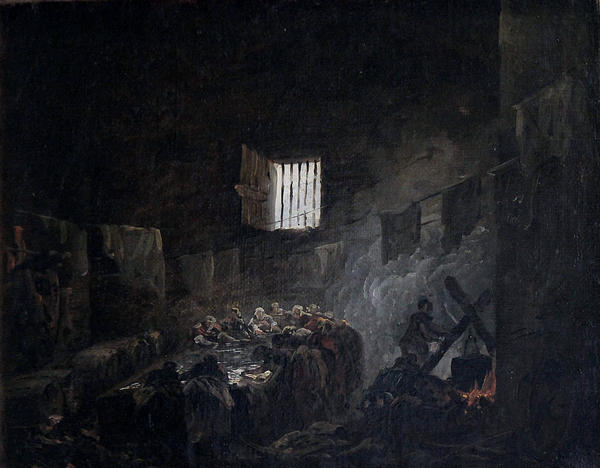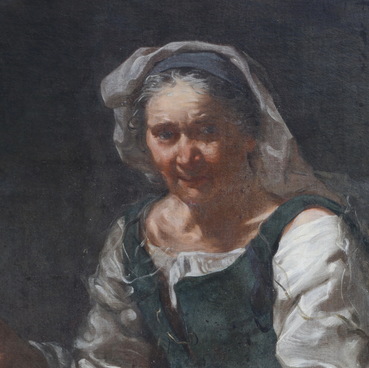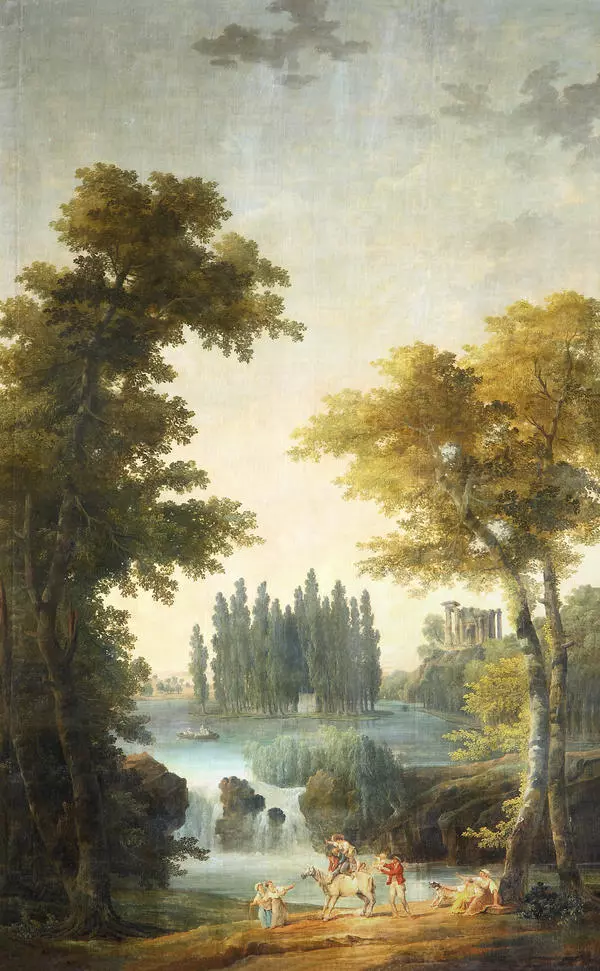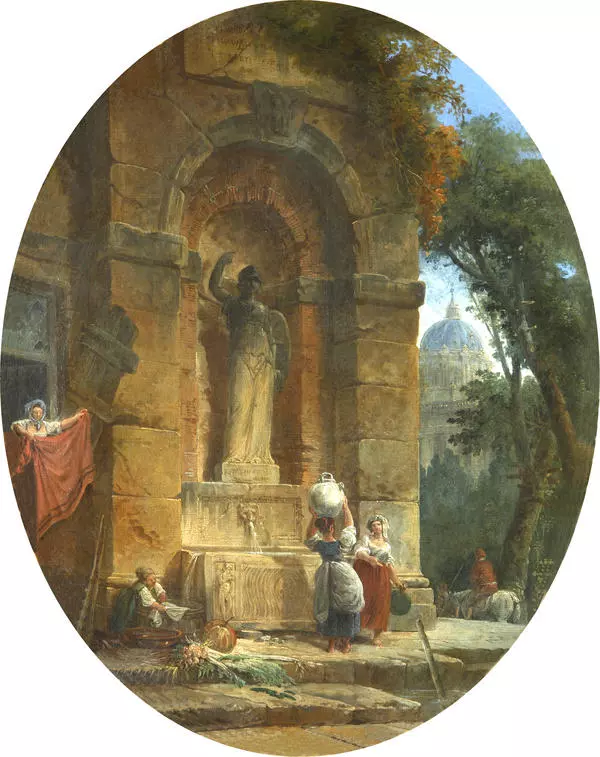Hubert Robert is a French landscapist, master of ruin and architectural fantasies and decorative suites. For his love to depiction of antique ruins, he earned the nickname ‘Robert from Ruins’. His paintings are presented in the museums of Russia, Europe, the United States, Canada and Australia.
The future artist gained education first from Jesuits in Paris College-de-France and later in the workshop of sculptor Michel-Ange Slodtz. The latter by teaching him design and perspective recommended him to turn to painting.
Relocating for 11 years from France to Italy, Robert got acquainted with such craftsmen of fantastic landscapes as Giovanni Piranesi and Giovanni Panini. They both had a tremendous impact on the artist’s style. For the first time he expressed interest to the contrast between the architecture of ancient Rome and contemporary buildings. The albums of sketches and drawings, which Robert collected in Italy, supplied him with motives for his works throughout his lifetime.
Back in Paris, Hubert Robert rapidly achieved success. He was enrolled in the Royal Academy of Painting and Sculpture. A year after he presented 13 paintings and multiple drawings in the Paris Salon. Denis Diderot who attended the exhibition called his architectural landscapes “magnificent ruins”.
The artist’s career developed successfully. He was subsequently designated as a planner of royal gardens, keeper of king’s paintings and later curator of the museum and Chancellor of the Academy.
In course of the French revolution, Robert was arrested on suspicion of disloyalty. He was placed first to prison Saint-Pelagie and then to prison Saint-Lazare. Over 10 months of imprisonment, he created around 50 picturesque works of small format.
Possibly, the motive of the presented painting is inspired by personal recollections of the author about the given period of life. However, Robert had a propensity to simulate the situations of tragedy and catastrophes, thus a prison subject could have captivated him even in his prosperous years.
Here the master used the ascetically modest palette; however, he attained an impressive affluence of tone renditions. His light & shadow modeling he built by comparing a clear cold light through the window, dimly orange flame under a washing boiler and a damp stuffy mist of the cellar.
The main indication of the fact that the artist depicted a prison was a window grate. The compelling evidence is the ropes where the washers have to dry laundry in the same premises and not on fresh air. Judging by the barrels in the left part of the painting, apart from the laundry, this place played a role of warehouse for supplies.
The future artist gained education first from Jesuits in Paris College-de-France and later in the workshop of sculptor Michel-Ange Slodtz. The latter by teaching him design and perspective recommended him to turn to painting.
Relocating for 11 years from France to Italy, Robert got acquainted with such craftsmen of fantastic landscapes as Giovanni Piranesi and Giovanni Panini. They both had a tremendous impact on the artist’s style. For the first time he expressed interest to the contrast between the architecture of ancient Rome and contemporary buildings. The albums of sketches and drawings, which Robert collected in Italy, supplied him with motives for his works throughout his lifetime.
Back in Paris, Hubert Robert rapidly achieved success. He was enrolled in the Royal Academy of Painting and Sculpture. A year after he presented 13 paintings and multiple drawings in the Paris Salon. Denis Diderot who attended the exhibition called his architectural landscapes “magnificent ruins”.
The artist’s career developed successfully. He was subsequently designated as a planner of royal gardens, keeper of king’s paintings and later curator of the museum and Chancellor of the Academy.
In course of the French revolution, Robert was arrested on suspicion of disloyalty. He was placed first to prison Saint-Pelagie and then to prison Saint-Lazare. Over 10 months of imprisonment, he created around 50 picturesque works of small format.
Possibly, the motive of the presented painting is inspired by personal recollections of the author about the given period of life. However, Robert had a propensity to simulate the situations of tragedy and catastrophes, thus a prison subject could have captivated him even in his prosperous years.
Here the master used the ascetically modest palette; however, he attained an impressive affluence of tone renditions. His light & shadow modeling he built by comparing a clear cold light through the window, dimly orange flame under a washing boiler and a damp stuffy mist of the cellar.
The main indication of the fact that the artist depicted a prison was a window grate. The compelling evidence is the ropes where the washers have to dry laundry in the same premises and not on fresh air. Judging by the barrels in the left part of the painting, apart from the laundry, this place played a role of warehouse for supplies.







